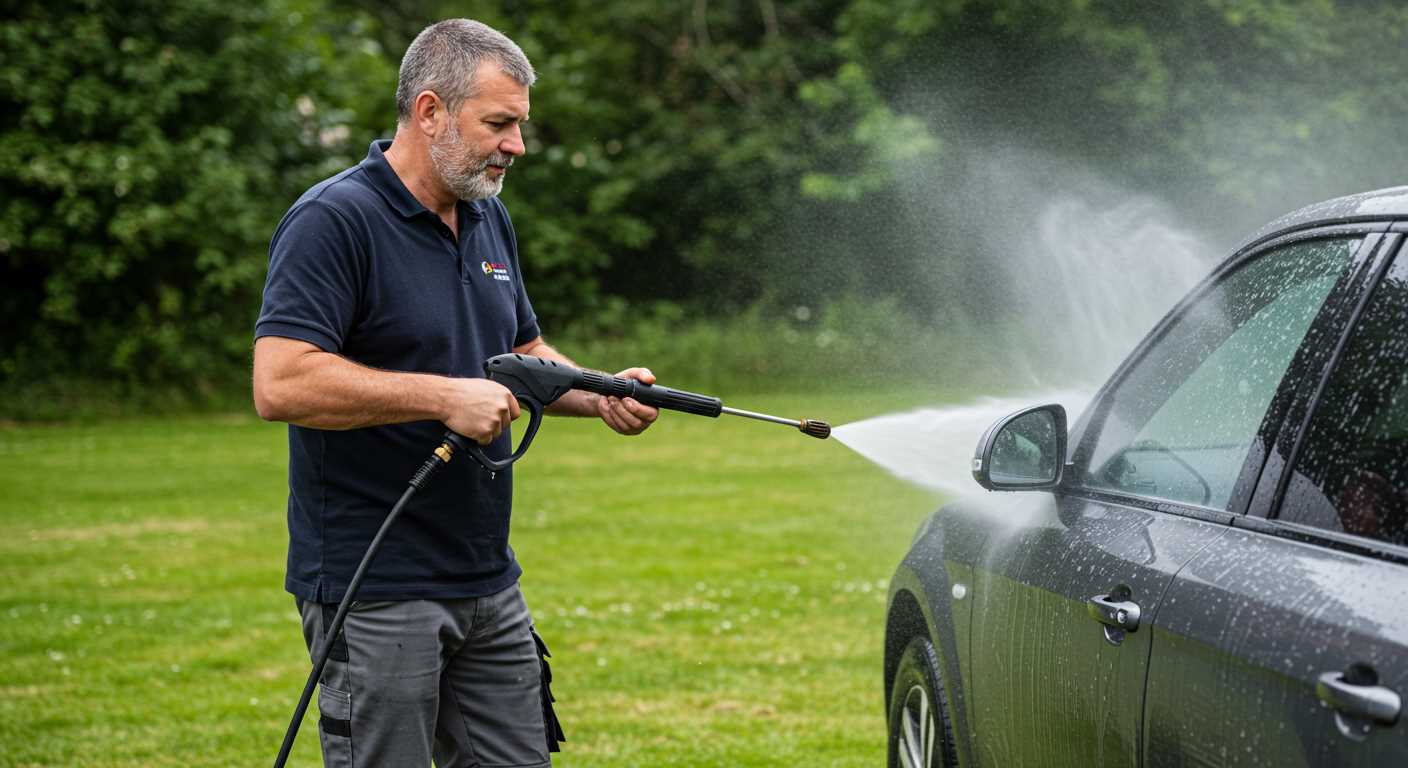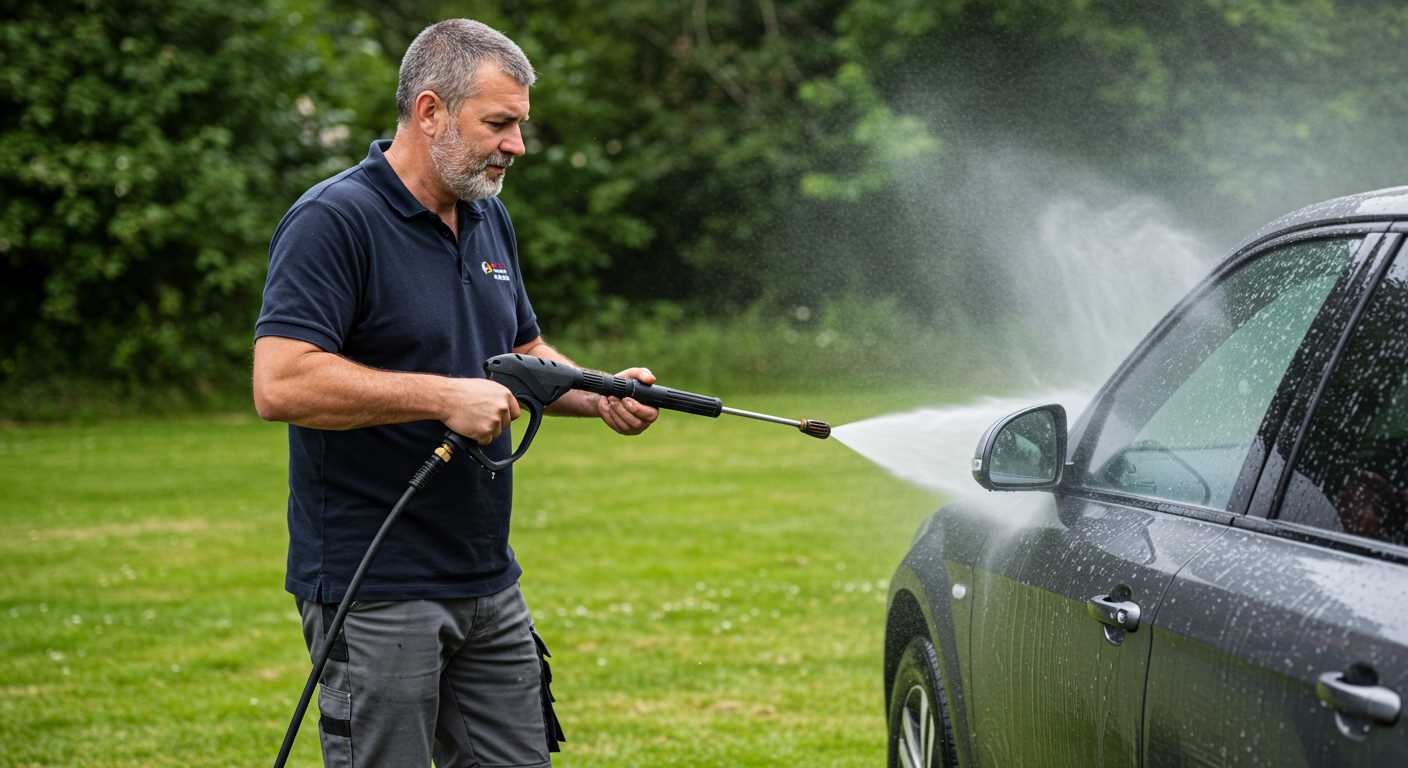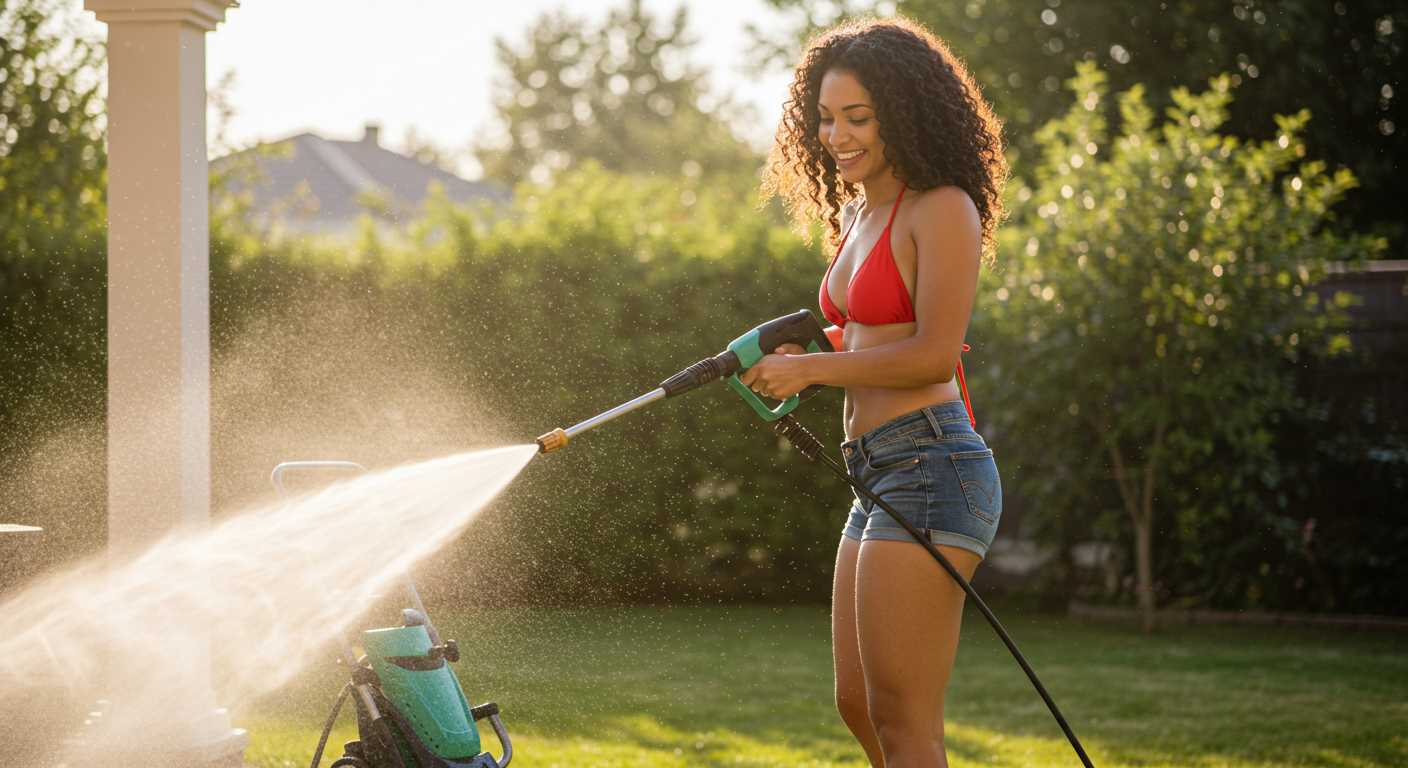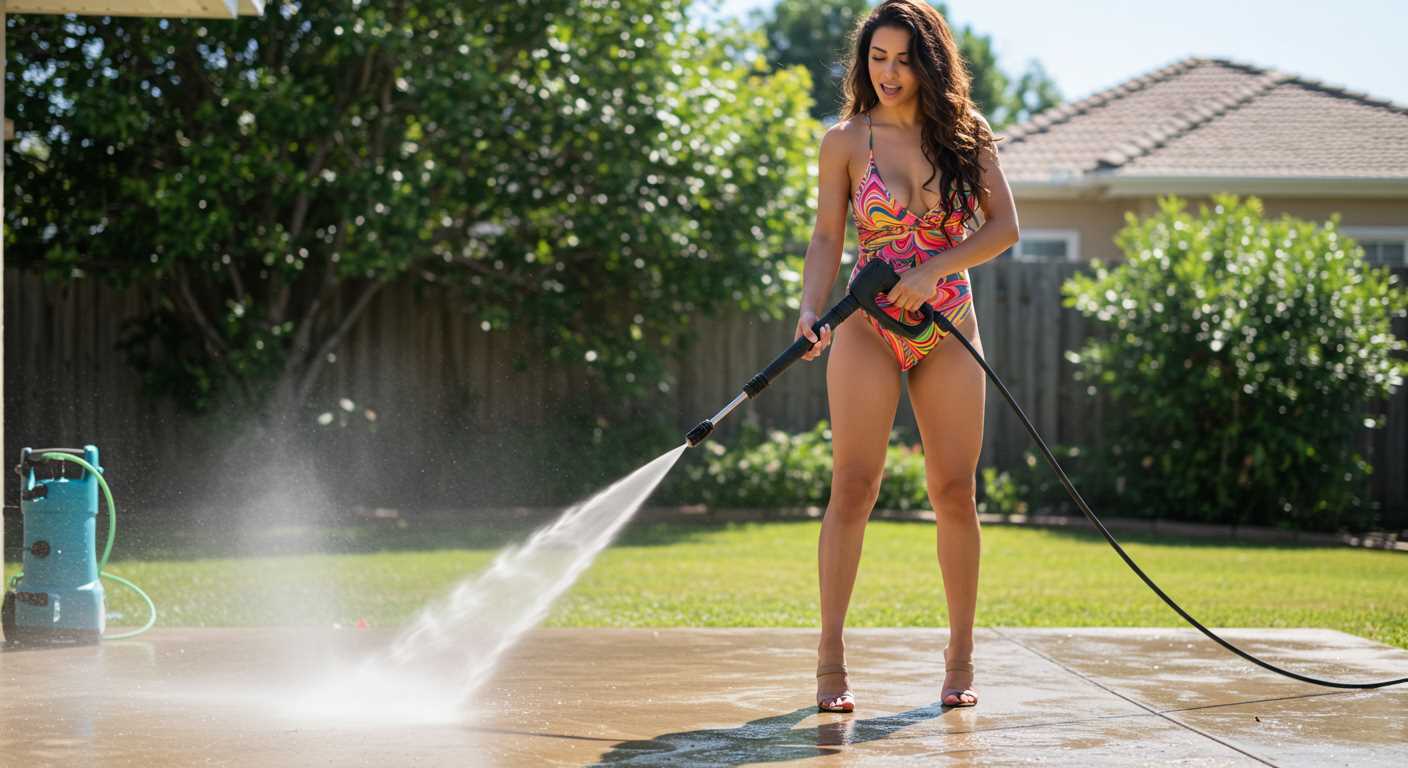




For those eager to understand the capabilities of their high-pressure cleaning device, the typical distance these machines can propel water is between 20 to 30 feet, depending on the model and nozzle used. My extensive experience in the field has shown that variations in pressure settings, nozzle types, and even the angle of spray can significantly influence this range.
During my years testing various models, I discovered that using a narrow-angle nozzle can extend the distance, allowing for a more concentrated stream that reaches further. For instance, I recall a job involving stubborn grime on a multi-storey building; switching to a zero-degree nozzle enabled me to effectively clean surfaces from a distance that surprised even me.
It’s also essential to consider the water pressure itself. Devices rated at 3000 PSI or higher typically achieve greater distances. In one instance, I had the chance to compare two machines side by side–one at 2000 PSI and another at 4000 PSI. The difference in reach was unmistakable, with the more powerful unit easily hitting the target from a significantly greater distance.
Remember to adjust your technique based on the specific task at hand. Different surfaces and types of dirt require not just the right distance but also the right pressure and angle. With a bit of practice, you’ll find the sweet spot for your cleaning needs.
Understanding Pressure Washer PSI Ratings
When selecting a cleaning device, focus on the PSI (pounds per square inch) rating. A higher PSI means a more powerful stream, which translates to better removal of grime and stains. For instance, a unit with a rating of 3000 PSI is suitable for tough jobs like stripping paint or cleaning heavy machinery.
In my experience, a 1500 to 2000 PSI model is ideal for residential tasks such as washing driveways, patios, and vehicles. These units strike a balance between power and control, making them user-friendly for most homeowners. Meanwhile, anything below 1500 PSI usually suffices for lighter tasks like cleaning outdoor furniture or small decks.
It’s also essential to consider the GPM (gallons per minute) in conjunction with PSI. A device with a high PSI but low GPM may not clean effectively. For optimal results, I recommend looking for a combination of at least 2.0 GPM with that 1500-2000 PSI range for a thorough clean.
Additionally, nozzle size affects the output as well. A narrower nozzle will concentrate the force, increasing the effectiveness of the stream, while a wider nozzle disperses it for gentler cleaning. I’ve found that switching nozzles based on the task at hand can make a significant difference in both performance and efficiency.
Lastly, always check the manufacturer’s guidelines regarding the recommended PSI for various surfaces. Using too high a pressure on delicate materials can lead to damage, so being informed can save you from costly mistakes. Trust me, I’ve seen it happen more than once where a quick clean turned into an expensive repair due to improper use.
Factors Influencing Spray Distance
Several elements dictate how far a cleaning unit can project water. One significant factor is the nozzle size. Larger orifices tend to disperse water over a wider area but with reduced force, while smaller ones concentrate pressure, increasing distance. Experimenting with different nozzles can yield better results based on your specific cleaning task.
The angle of the spray is also pivotal. A straight jet often travels farther than a fan spray. Adjusting the nozzle to achieve a narrow stream can enhance reach, especially for high structures or vehicles. I remember using a narrow nozzle to clean gutters; the precision allowed me to reach the farthest corners without needing a ladder.
Water flow rate plays a role too. Higher gallons per minute (GPM) can propel the water further, but balance is key. A unit with a lower GPM and high PSI may still outperform a high GPM model in terms of distance due to the pressure behind the stream. I once had a client who was astonished when I showed them how a lower GPM model could clean their driveway more effectively than a larger unit because of its concentrated pressure.
Distance is also affected by the type of surface being cleaned. Porous or uneven surfaces absorb water, reducing the effective range. For instance, while washing a wooden deck, I noticed that the spray didn’t reach as far compared to cleaning a smooth concrete surface. Adjusting the technique and settings made a noticeable difference.
Environmental factors, like wind, can alter how far the stream travels. A gentle breeze can push the water off course or reduce its impact. I always advise customers to assess weather conditions before starting a job, especially outdoors; it can save time and effort.
Lastly, maintenance of the equipment is non-negotiable. Clogged nozzles or worn-out pump components can severely diminish performance. Regular checks and cleaning ensure optimal functionality. I’ve seen the difference a simple maintenance routine can make–units that were once underperforming became efficient after a thorough check-up.
Comparing Different Types of Nozzles
Choosing the right nozzle significantly impacts the cleaning reach and effectiveness. Each type serves a specific purpose, influencing the distance and pattern of the spray. Here’s a breakdown of common nozzle types based on my experiences.
Turbo Nozzle
This nozzle combines a rotating jet with high pressure, making it ideal for stubborn stains. The swirling action allows for a wider reach compared to standard nozzles. From my tests, turbo nozzles can extend cleaning distance by approximately 25%, making them perfect for surfaces like concrete and brick.
Fan Nozzles
- 0-Degree: Provides a concentrated stream for tough spots. Expect a limited range but maximum impact.
- 15-Degree: A versatile option for stripping paint and removing moss. Good reach while maintaining pressure.
- 25-Degree: Excellent for general cleaning tasks, hitting a balance between distance and coverage.
- 40-Degree: Best for delicate surfaces such as cars or wood. Offers the widest spray pattern but less pressure.
Fan nozzles are particularly useful for varying tasks, allowing you to adjust the spray distance based on your needs. The wider the angle, the shorter the effective reach, but you gain coverage, especially when cleaning large areas.
Soap Nozzle
This nozzle typically has a wider opening, allowing for a more gentle application of cleaning solutions. Its reach is generally less than fan nozzles, but it excels in distributing soap evenly across surfaces. I’ve found that using this nozzle first can significantly ease the subsequent cleaning process.
Understanding the characteristics of each nozzle type allows for more effective cleaning strategies. Always consider the specific task at hand, as the right nozzle can enhance performance and reduce cleaning time.
Optimal Distance for Various Cleaning Tasks
For optimal results, maintaining specific distances during cleaning is crucial. For instance, when tackling tough grime on concrete surfaces, aim for approximately 12 to 18 inches from the surface. This distance ensures effective removal without causing damage.
Surface-Specific Recommendations
When dealing with vehicles, reduce the distance to around 24 inches. This helps avoid damage to the paint while still providing sufficient force to eliminate dirt and debris. For delicate tasks like cleaning outdoor furniture, a distance of 30 to 36 inches is advisable. This prevents chipping or scratching while ensuring a thorough clean.
Adjusting for Different Soils
Heavily soiled areas, such as driveways, will benefit from a closer approach, about 6 to 12 inches. However, be cautious with softer surfaces like wood, where a distance of 18 to 24 inches can prevent splintering. Remember, adjusting your distance based on the type of material and level of dirt can significantly enhance your cleaning efficiency.
Each task requires a tailored approach. Familiarising yourself with these distances will lead to better results and longer-lasting surfaces.
Safety Considerations When Using a High-Pressure Cleaning Device
Always wear protective gear, including safety goggles, gloves, and sturdy footwear, when operating these machines. I recall a time when I was cleaning a patio without proper eye protection. A tiny piece of debris struck my eye, causing discomfort and a trip to the doctor. Since then, I never skip safety glasses.
Protective Equipment
Invest in non-slip footwear. When working with water and soap, surfaces can become slick. I learned this the hard way; one slip while cleaning a driveway led to a sprained ankle. Also, consider using ear protection if your device produces significant noise. Prolonged exposure to high decibels can lead to hearing loss.
Handling and Maintenance
Always check hoses and nozzles for wear or damage before use. I once faced a situation where a worn-out hose burst, spraying water uncontrollably. It took a while to regain control, and the mess it created was frustrating. Ensure your equipment is in optimal condition to avoid accidents. Never point the nozzle at yourself or others, even when not in use. The force can cause serious injury. Lastly, always follow the manufacturer’s instructions for safe operation.
Common Mistakes that Affect Spray Distance
One crucial aspect often overlooked is the choice of nozzle. Using the wrong nozzle can significantly decrease the range. I remember a time when I was helping a friend with his driveway. He insisted on using a wide-angle nozzle for a tough stain. The result? We were left scrubbing by hand instead of letting the equipment do the work.
Inadequate Maintenance
Regular maintenance is key. A clogged filter or worn-out seals can reduce pressure and, consequently, the distance. I learned this the hard way when I attempted to clean my patio after a long winter. The spray barely reached the surface, and I wasted an entire afternoon. A quick check of the equipment could have saved me the hassle.
Incorrect Operating Angle
Another common error is the angle of application. Many users tend to spray too close or at an incorrect angle, which affects the distance. Holding the nozzle too close can lead to uneven cleaning and damage to surfaces. I’ve often advised people to maintain a distance of about two feet for optimal results. This allows the spray to spread evenly and reach its maximum potential.
Be cautious of the surface you’re cleaning as well. Soft materials need a gentler touch, while hard surfaces can withstand a more direct approach. For anyone looking for additional tools for restoration projects, consider checking out the best air compressor for car restoration. The right equipment makes all the difference.
Maintenance Tips for Maximising Performance
Regular upkeep of your cleaning equipment ensures optimal performance and longevity. Here are practical tips I’ve gathered over the years to keep your unit in prime condition.
Routine Cleaning
- After each use, flush the system with clean water to remove any debris or soap residue.
- Check and clean the nozzle regularly. A clogged nozzle can significantly reduce performance.
- Inspect hoses for kinks or leaks. Replace any damaged sections immediately.
Storage Practices
- Store the unit in a dry area to prevent rust and corrosion.
- During winter, consider using antifreeze in the pump to avoid freezing damage.
- Keep all accessories organised and stored properly to prevent wear and tear.
For enhanced cleaning capabilities, you might want to explore a snow foam gun without pressure washer. These can offer a different approach to cleaning, especially for delicate surfaces.
Regular Inspections
- Examine the motor and electrical components periodically for any signs of wear.
- Check fluid levels and replace oils as recommended in the user manual.
- Look for any loose fittings or connections and tighten them as necessary.
By following these maintenance guidelines, you’ll ensure that your equipment remains reliable and efficient for years to come.
Real-Life Examples of Pressure Washer Range
During my time in the cleaning equipment industry, I came across numerous scenarios that highlighted the capabilities of different models. For instance, while testing a 3000 PSI unit equipped with a narrow nozzle, I was able to reach a height of approximately 30 feet when cleaning the second storey of a house. This was particularly useful for removing stubborn dirt from gutters without the need for a ladder.
Another striking example occurred when I was demonstrating a lower PSI machine, rated at 1500 PSI, to a group of homeowners. I showed them how, despite its lower power, it could effectively clean a driveway by standing about 6 feet away and using a fan nozzle. The spread of the spray was wide enough to cover the surface without causing damage, showcasing that distance isn’t solely about pressure but also about technique and nozzle choice.
I’ve also encountered situations where the angle of the spray made a significant difference. In one instance, while cleaning a patio, I adjusted the nozzle to a 25-degree angle and noticed that the spray reached an impressive distance of 15 feet, effectively removing grime without excessive effort. It was a clear demonstration of how angle and technique can extend the reach of water.
| Equipment Type | PSI Rating | Example Distance | Cleaning Task |
|---|---|---|---|
| Residential Unit | 1500 PSI | 6 feet | Driveway Cleaning |
| Mid-Range Model | 2500 PSI | 20 feet | Deck Cleaning |
| High-End Model | 3000 PSI | 30 feet | Gutter Cleaning |
In my experience, it’s not just about the specifications on paper. A friend of mine once used a 2000 PSI machine to wash his car from a distance of around 5 feet, which did the job efficiently without causing any damage to the paint. The key takeaway is that knowing the right distance for each task is paramount.
Lastly, I’ve had clients who underestimated their equipment. A landscaper I worked with was amazed when I showed him that with the right nozzle and distance, he could remove weeds in his garden from a safe distance, avoiding direct contact with the chemicals he was using. This not only saved time but also enhanced safety during the process.




.jpg)


